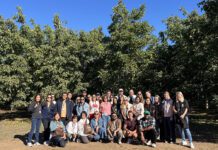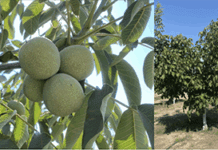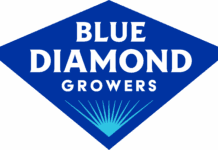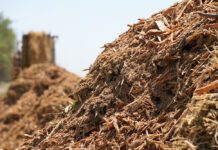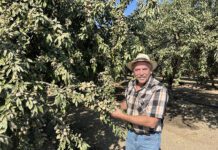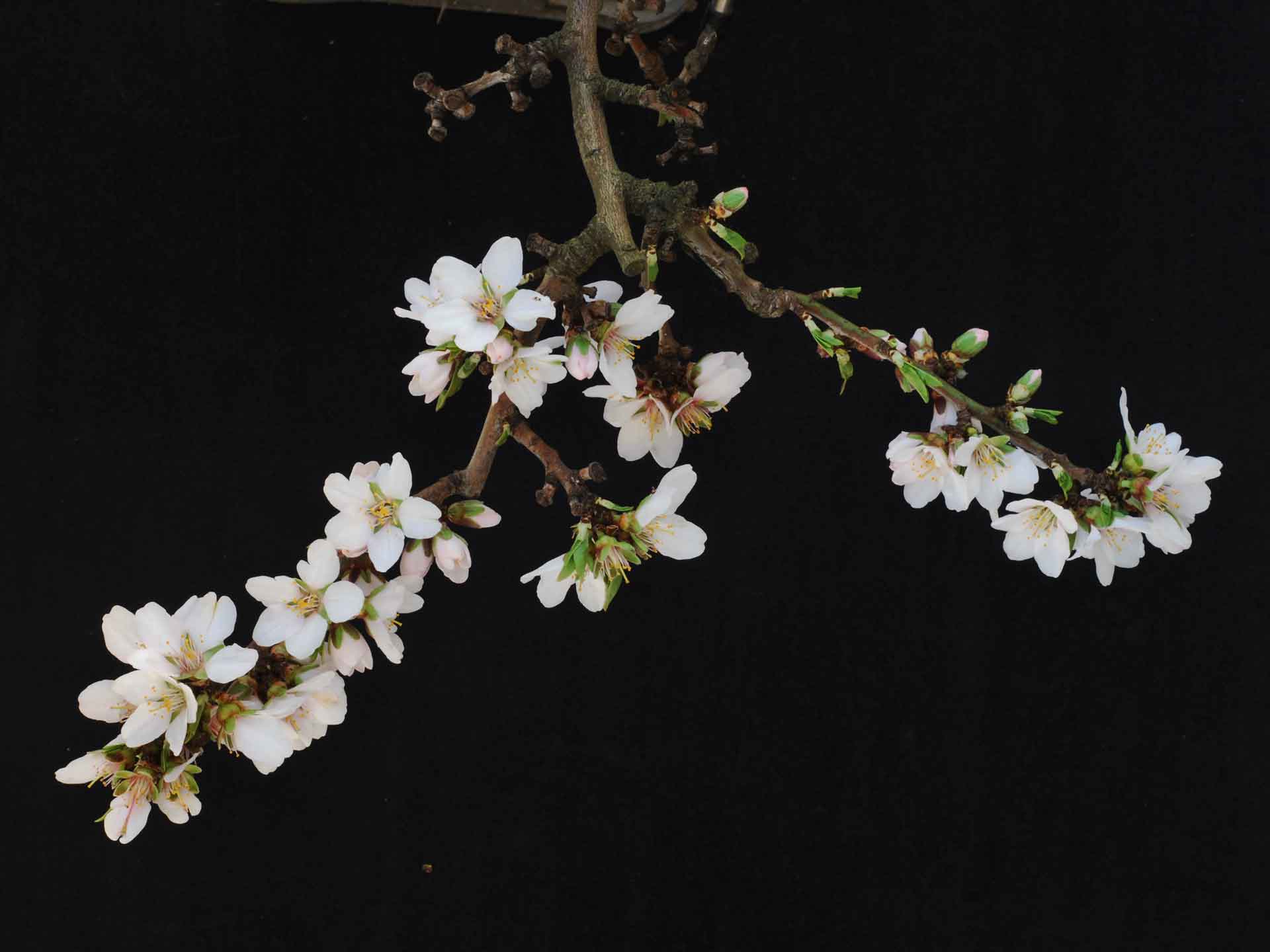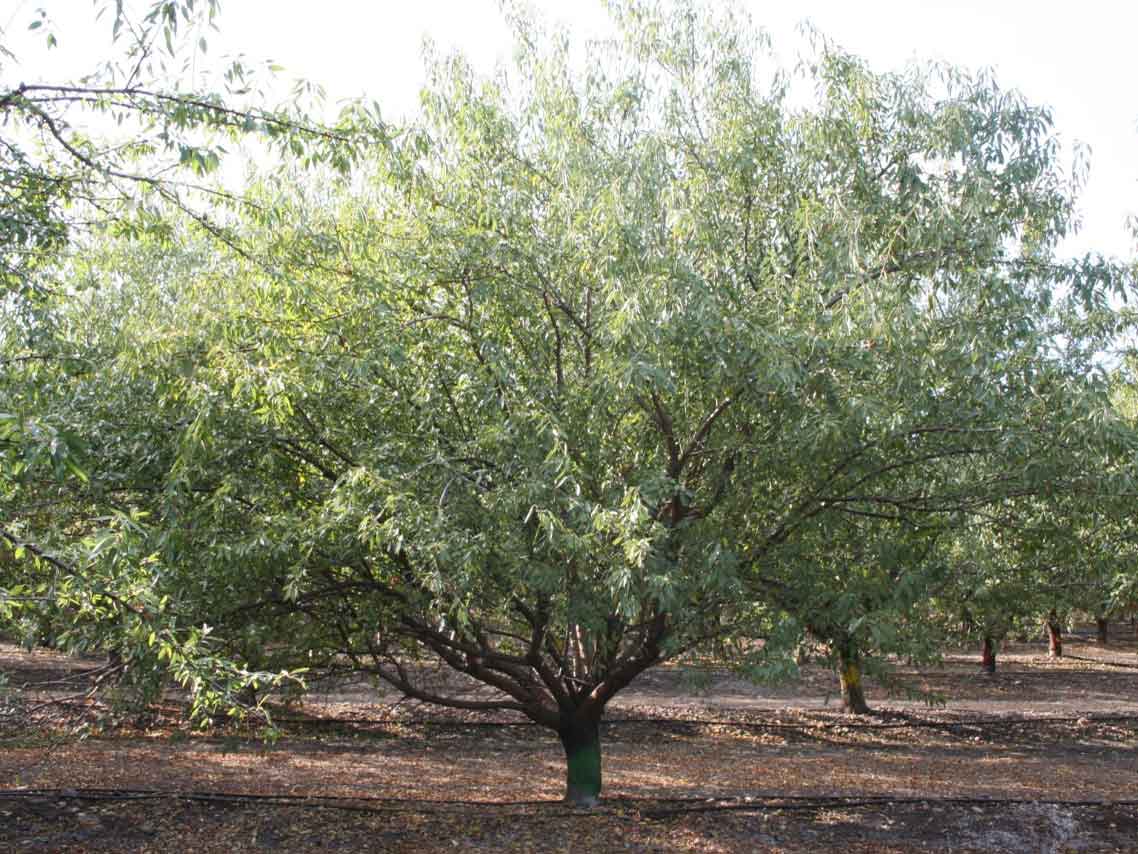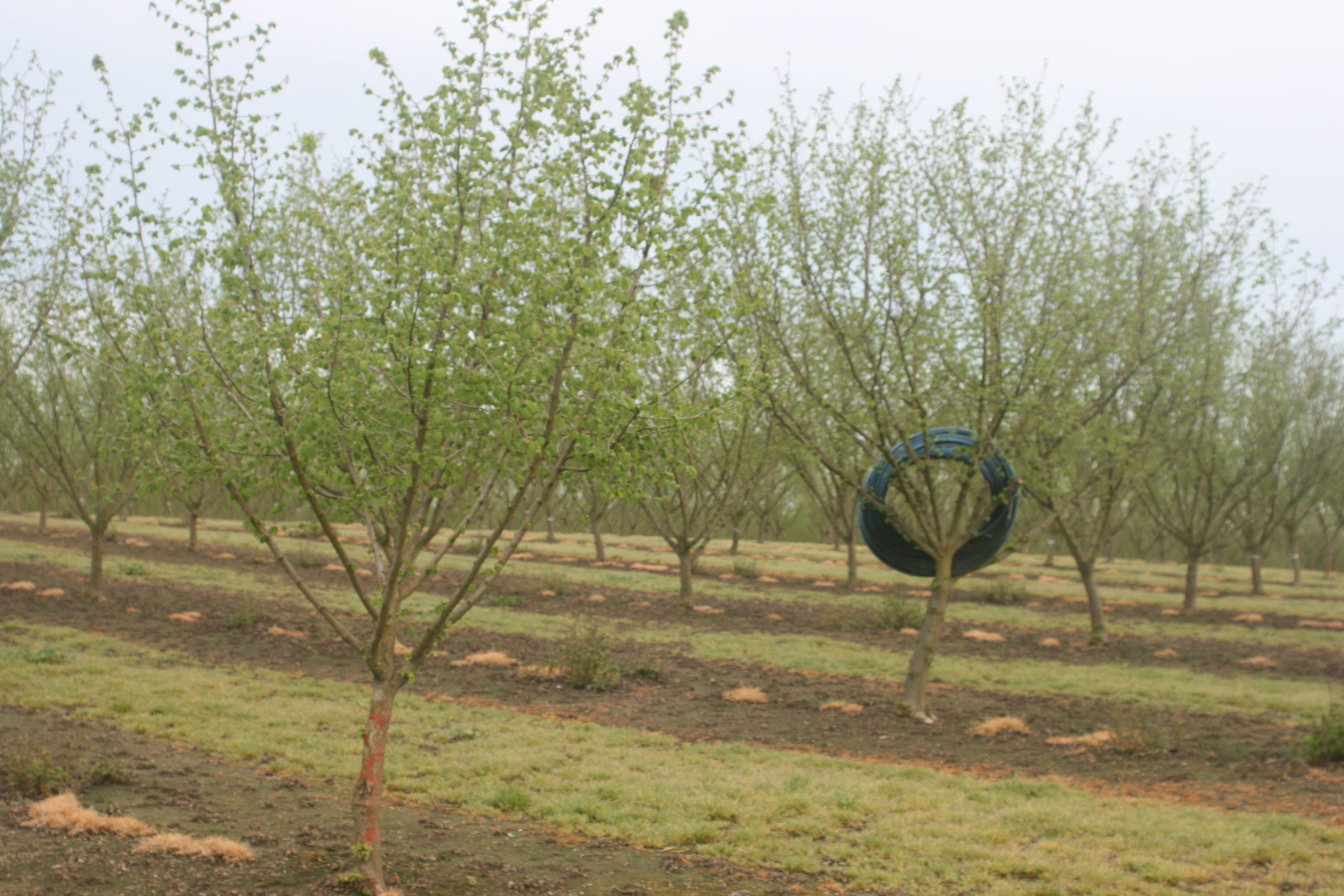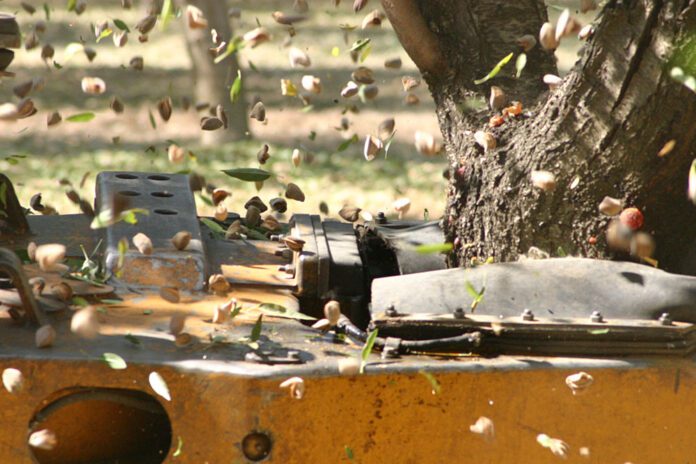
Protein-feeding ants can cause significant nut damage between shaking and pickup while the nuts are on the ground. Treatment needs to come well in advance of harvest to prevent damage.
“Ant damage in almond is a major concern after the trees are shaken and the nuts are on the orchard floor. Ant damage while the nuts are still on trees is very, very rare,” according to Sudan Gyawaly, integrated pest management advisor for Butte, Glenn, Yuba/Sutter, Colusa and Tehama counties.
“We have seen some instances where the ants infest the almond nuts on the young tree, but that’s very rare and it doesn’t typically cause economic damage,” Gyawaly said, adding treatment is not recommended for trees that aren’t in production.
Ants
There are two main ant pests in almond: the pavement ant and the southern fire ant. The pavement ant is about 0.13 inch long, dark brown and covered with coarse hairs. It has ridges on its head that are visible with a hand lens, and it prefers to nest in sandy or loam soils. It’s found throughout the Central Valley, but most commonly in the northern San Joaquin and Sacramento valleys.
The southern fire ant is 0.07 to 0.25 inch long, has an amber head and thorax with a black abdomen. Compared to pavement ants, fire ants vigorously swarm from the nest entrance when disturbed. Southern fire ant nests are often found with clumps of weeds, such as nutsedge or spotted spurge.
Neither species likes to climb trees, but once the nuts are harvested and on the ground, they eat them, especially if there’s an opening in the shell.
“There is a beneficial species, the pyramid ant, and it’s important not to confuse them with southern fire ants as they can look very similar,” Gyawaly said.
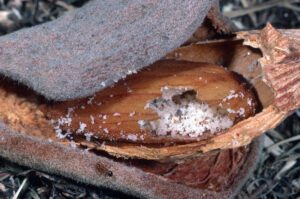
Ant Management
Once the nuts are shaken and left on the ground to dry, they are susceptible to ant damage. The longer the nuts are on the tree, the drier they will be and the less time they need to be on the ground before they’re picked up. But the longer the nuts are left in the tree, the longer they are exposed to navel orangeworm (NOW). This leaves growers juggling between harvesting the trees as late as possible to minimize ant damage but getting the nuts off the tree as fast as possible to prevent NOW damage.
“How many days the nuts are left in the orchard will affect the amount of damage,” Gyawaly said, adding removing nuts from the orchard floor as soon as possible is advised, especially if there are ant populations in the orchard.
Organic Management
There are organic baits, but they aren’t as effective. Gyawaly advises organic growers if they have a problem with ants to remove nuts from the ground as soon as possible because the longer they are left on the ground, the more damage. Another option for organic is hard-shell varieties because they tend to have less problems with ants, he added.
Determining Damage
Ants can completely hollow out nutmeats leaving only the pellicle. Weed-free orchards and those without cover crops tend to have less ant problems because the ants will feed on the weed seeds. Damage is also lower on varieties that have nuts with tight shell seal or with shell splits less than 0.03 inch wide. Shell seal can vary greatly from year to year depending on variety, crop size and horticultural practices. Heavy crops that result in small nuts will likely have less open shells and thus less potential for ant damage.
Taking annual samples at harvest is important to determine the level of ant damage. Ants don’t like the skin of the kernel; they eat the white meat and leave behind a powdery substance that is an indication of ant damage.
“After the harvest, you definitely want to collect harvest samples to find out what pests are present in your orchard, so going back to the orchard, collecting your own harvest sample and then looking at the damage to identify damage caused by different groups of insect pest is very important,” Gyawaly said.
This is particularly important with the arrival of the Carpophilus beetle because ant damage is very similar to Carpophilus damage. “Collecting a harvest sample and examining it carefully becomes more and more important now because we have a new insect that causes damage very similar to ant damage and NOW damage.”
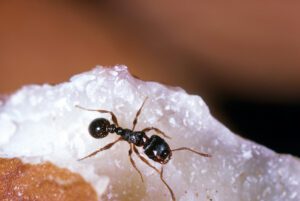
Pros and Cons of Specific Baits
“Most of the insecticides that we have currently for ant management are growth regulators. We have at least four insecticides listed in the UC IPM guidelines, and three of them have to be applied at least four to six weeks before harvest to prevent ant damage effectively. There is one that can be applied later, two weeks before the harvest,” Gyawaly said.
Some of the growth regulator products have some contact effects, but mostly they affect the whole colony. It must be taken by the forager ant into the colony to collapse it.
Clinch, Esteem, and Extinguish are all applied approximately two months before harvest (May and June). The worker ants take the bait into the colony, it’s fed to the queens and the queens become sterile and/or die. The advantage to these baits is they are inexpensive and are applied earlier in the season.
There is also a newer bait called Altrevin. Altrevin works much faster but doesn’t have the residual effect of the other baits and can be used two weeks before harvest. Using this product allows growers to monitor ant populations and decide whether treatment is necessary.
Before application, the soil surface should be dry so moisture is not absorbed by the bait and reduces its attractiveness to the ants. To maintain bait quality and maximize bait pickup by ants, don’t use bait 48 hours before an irrigation with sprinklers or microsprinklers and 24 hours after an irrigation.
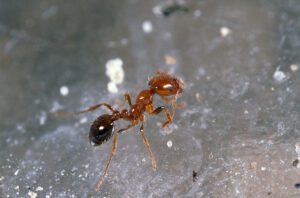
Monitoring
Monitoring is always advised, but at the same time, thresholds can be difficult to interpret.
Survey the orchard floor for ant colonies two to three days after irrigation in April or May in the southern San Joaquin Valley and June in the northern San Joaquin and Sacramento valleys. UC IPM recommends:
• Choose five survey areas per block of the orchard, each about 1000 sq ft, including the soil area from mid-alley to beneath trees.
• Count the number of active pest-ant colonies in each area, sampling five different areas of the orchard.
• Total the ant colonies to get the number in a 5000 sq-ft area and compare it to the table below which gives an indication of the amount of damage you can expect at harvest.
• Record your results
https://ipm.ucanr.edu/PMG/C003/almond-antcolony.pdf
There are ant monitoring guidelines available on the UC IPM website at https://ipm.ucanr.edu/agriculture/almond/ants/#gsc.tab=0




